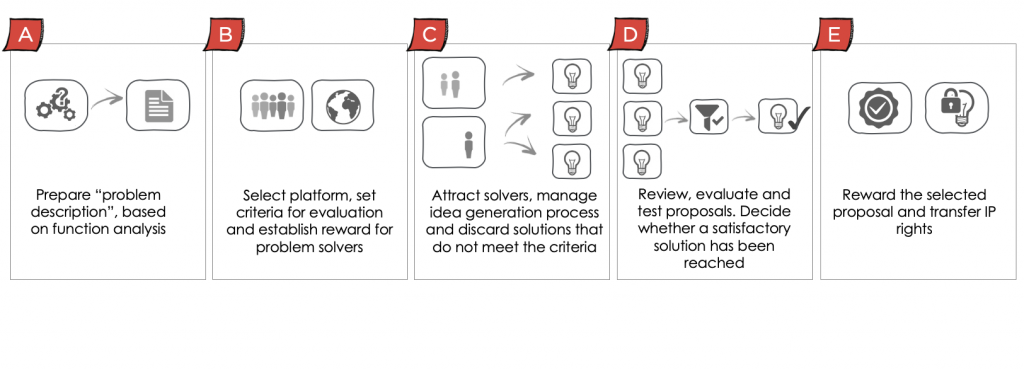Every year companies around the globe invest several billion dollars in innovation. Businesses typically reinvest around 5% to 10% of their annual revenue, in research and development. This investment does not always produce the desired results because rapidly changing technologies need to be built into the next products and/or customers demand different features. Technical capabilities and speed become paramount to adapt to those changes.
When to use open innovation and how to use it effectively becomes an important challenge for any organization. This method also changes the mindset of engineers from “solution finders” to “problem describers and solution evaluators”.
And here are the challenges:
- “No matter who you are – most of the smartest people work for someone else” (Bill Joy – Sun Microsystems, BSD Unix, Java)
- “When you come to research and development you can’t answer any of the questions.. […].. You don’t know when you are going to get the thing, whether it’s going to work or not and whether it’s going to have any value whatsoever” (Charles Kettering – VP, General Motors Inventor: Electrical Starting Motor, Ethyl Gasoline, Freon, 186 Patents)
It is almost impossible to be fast and integrate all kind of different features from different engineering disciplines into your new products/service offerings, if you only employ traditional product development processes. The product development teams of successful innovators are able to integrate open innovation techniques into their processes.
Open Innovation, as opposed to traditional product development or value engineering, provides the inflow of knowledge from web-based communities with participants from a wide array of industries and disciplines. They offer diverse perspectives and fresh insights to solving specific problems. And that is where its strength lies: a ‘universal’ way of facing a problem as opposed to a company or industry’s way of doing so.
What are its advantages and why use Open Innovation?
- Open Innovation provides high flexibility at a low financial risk:
- A visible reduction in the time and cost of a company’s innovation projects
- Since research is not originated within the company, internal resources are not compromised in the process
- The company has the potential to (add) incorporate to its own knowledge and processes a number of solutions and innovations in the form of ideas, patents, products and technologies that, due to lack of knowledge, time, technical resources (own or industry related) would have never been generated by them
- Inflow of knowledge comes from people from different fields and industries: the most disruptive ideas might come from surprising places
- And last but not least, and this applies not only to the company which promotes the challenge but to its sector of industry in general, ideas, creations or inventions that otherwise would find it hard to see the light due to strategic reasons, lack of ability or financing, are able to be placed in the market

In summary, Open Innovation provides companies a solution to their important technology, science, business, A/I and data challenges and issues by connecting them with a global network of expert problem solvers across several industries and around the world.
Our unique approach to implementing Open Innovation processes and mindsets allows our clients to quickly adapt to this new reality. The adoption requires a change in how organizations apply their engineering knowledge. Engineers are trained to “solve” problems, but open innovation forces them to become very good “problem describers”. This is just one example of areas that we address with our approach.

